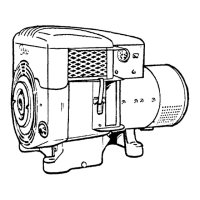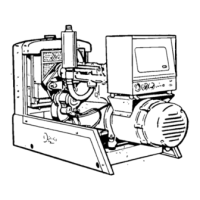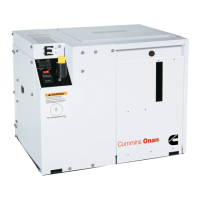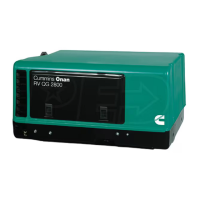SAFETY
PRECAUTIONS
Throughout this manual
you
will find eye-catching
flags containing Warnings and Cautions, alerting you
to conditions that could result
in
danger
to
you
or
the
equipment,
if
the
notice
is
ignored.
ONAN recommends that
you
read your manual
and
become thoroughly acquainted with
it and
your
equipment before
you
start your unit.
The ac-
cumulated experience
of
ONAN engineers
is
available
to
you, enabling
you
to
operate your
set
in
the most efficient and safest manner possible. These
recommendations
and the
following safety
precautions
are
for
your protection. Study and know
them!
If
it is
necessary
to
make adjustments while
the
unit
is
running,
use
extreme caution when close
to
hot
exhausts, moving parts,
etc.
Do
not
stand
on a
wet
floor while working
on
electrical equipment.
Use
rubber insulative mats
placed
on dry
wood platforms.
REMEMBER. Most accidents are caused
by
failure
to
follow simple
and
fundamental safety rules
or
precautions.
Most accidents
can be
prevented!
KNOW
YOUR
MANUAL
- KNOW
YOUR
EQUIP-
MENT
Fuel
System
•
DO
NOT
fill fuel tanks while engine
is
running,
unless tanks
are
outside engine compartment.
DO
NOT
SMOKE
OR
USE
AN
OPEN FLAME
in
the vicinity
of the
generator
set or
fuel tank.
Internal combustion engine fuels are highly flam-
mable.
REMEMBER
— IF
YOU
CAN
SMELL FUMES
—
YOU'RE COURTING
A
POSSIBLE EXPLOSION
AND FIRE!
General
• Keep your generating
set and the
surrounding
area clean and free from obstructions. Remove
all
oil deposits; keep
the
floor clean
and
dry.
• Provide appropriate fire extinguishers and install
them
in
convenient locations. Consult your local
fire department
for the
correct type
of ex-
tinguisher
to
use.
Do not
use
foam
or
carbon
tetrachloride
on
electrical fires. Use extinguisher
rated
ABC
by
NFPA.
• Make sure that
all
fasteners
on
the generating
set
are secure. Tighten supports
and
clamps, keep
guards
in
position over fans, driving belts,
etc.
•
Do not
wear loose clothing
in the
vicinity
of
moving parts,
or
jewelry while working
on
elec-
trical equipment.
Make sure that oily rags are
not
left on
or
nearthe
engine.
Fuel lines must
be of
steel piping, adequately
secured,
and free from leaks. Piping attheengine
should
be
approved flexible line.
Do not use
copper piping on flexible lines as copper will work
harden
and
become brittle.
Use
black pipe
on
natural gas
or
gaseous fuels,
but
not on gasoline
or diesel
fuel.
Your engine installation should be equipped with
a means
of
positive fuel shutoff
in
applications
when fuel
is
conducted from
a
remote source.
Fuels under pressure (e.g. natural gas
or
liquified
petroleum gas) should be controlled by a positive
shutoff valve, preferably automatic,
in
addition
to
any valve integral with
the
carburetor
or
gas
regulator equipment.

